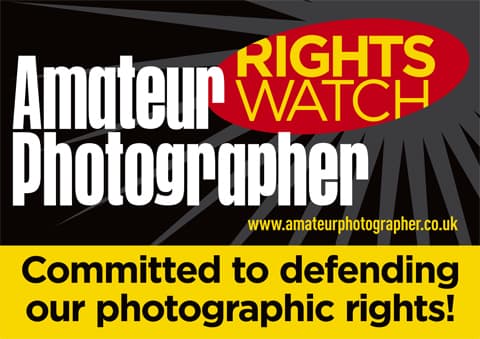Amateur Photographer (AP) can exclusively reveal that Glasgow Subway passengers will be told they must ‘not take photographs, or make video, audio or visual recordings on any part of the subway’.
The ban is contained in Section 12.1 of proposed byelaws drawn up by the system’s operator, Strathclyde Partnership for Transport (SPT).
The new rules add: ‘The only exception to byelaw 12.1 is if a passenger has the written permission of SPT in relation to the activity.
‘The passenger must be carrying the permission, show it to an officer on request, and comply with any conditions of that permission.’
The crackdown will apply to all parts of the underground system, including trains and areas owned by SPT, even above ground.
Transport bosses say the byelaws are designed to ‘make sure that travelling on the subway is easy, safe, secure and comfortable’.
‘Impossible to police’
But photographers have condemned the plan as unrealistic and unfair.
Michael Pritchard, director general of the Royal Photographic Society (RPS) told AP: ‘Once again, photography is being targeted in a blanket way that is illogical and offers no benefit to the public or to Strathclyde transport staff.
‘Furthermore, as most people carry a camera phone, the proposed byelaw would be impossible to police.’
Pritchard (pictured below) added: ‘The UK’s largest public transport system in London has no problem with amateur photography on its network, provided flash photography is not used for safety reasons. And commercial photography can be undertaken with advance notice.
‘It seems difficult to understand why Strathclyde feels it needs to prohibit all photography.’

RPS director general Michael Pritchard
Photography enthusiast Chris White, who was stopped while taking photos at a Glasgow shopping centre last year, agrees: ‘It seems totally unworkable and the majority of people can take photos and video on their mobile phone.
‘Glasgow Subway has tourist appeal. As both a university and a tourist city Glasgow attracts thousands of visitors each year…
‘What’s more, stations on the underground have free Wi-Fi access, so people can, and will, upload straight to social media sites.’
These are the first byelaws to state that photography is not allowed, though the SPT maintains that anyone seen taking a photograph on its premises today would be told to seek prior consent.
The regulations will replace 1980 byelaws that contain no such restrictions.
Not limited to flash/commercial pics
AP understands that subway managers currently use station staff, on-site British Transport Police and CCTV to spot unauthorised photography and filming.
Though a source said photography enables people to record the layout of the subway system, the SPT has stopped short of saying the move is related to concerns over people taking hostile reconnaissance pictures – for possible terrorism purposes, for example.
Among those angered by the proposals is Rana Bains, a keen photographer who said he did not encounter any problems when he took a picture on the Glasgow Subway a few years ago, accompanied by his son.
Bains, who lives in north London, said the byelaws, as they stand, ban any ‘casual’ photography, without prior clearance from the authorities.
He pointed out that the restrictions are not limited to flash photos, and images captured by professional photographers.
Opened in 1896, Glasgow Subway is the world’s third oldest underground system, after London and Budapest.
It includes 15 stations along a route of just over 10km.
‘National icon’
Last year it was described as ‘truly a national icon’ by SPT chairman Jonathan Findlay, in an interview with the BBC to mark the subway’s 115th anniversary.
Visit Scotland warns that the rules mean amateurs face a ‘learning curve’, but a spokesman for the organisation said he does not expect the move to have a large impact on tourism.
‘Glasgow has a wealth of visitor attractions – there are plenty of opportunities to take pictures [away from the underground network],’ he told AP.
The SPT has opened a consultation process which closes on 15 June.
‘The Society will make formal representations,’ confirmed the RPS’s Michael Pritchard.
‘If London doesn’t feel any need to ban photography on the Tube, I really do not see why Glasgow thinks it’s under greater threat.’
‘Where will this lead?’
David Hunter, president of Eastwood Photographic Society, which is based in Glasgow, said: ‘The Subway is a much-loved public place and often a subject featured in pictures taken by amateur photographers.
‘Where will this lead next – buses, trains, station platforms… the street?’
Chris Milner, deputy editor of The Railway Magazine denounced the idea as ‘nuts’.
Milner told AP: ‘What is of concern is that, once it’s applied to the Glasgow underground, how easy will it be for SPT to roll it out to other rail operations they are involved in?’
In a statement, the SPT told us: ‘SPT regularly receives photography and filming requests for the Subway and we are always happy to accommodate these when we can.
‘Our company policy has always been that consent must be sought prior to any photography taking place, and this is in line with security restrictions at any major transport hub, including railway stations, airports etc.
‘It also allows us to ensure that any such activity does not disrupt the operations of the network in any way.’
Photographer Chris White added: ‘Section 11.2 prohibits the playing of musical instruments or use of any device for the reproduction of sound or music “in a way which may annoy a reasonable person”.
‘Would it not be more practical to have a similar clause for photos and videos?’
Transport Scotland and See Glasgow, a tourism body, declined to comment.
Will photography go down the tube? Read the full SPT proposals
HERE
• Click HERE for details of AP’s 2-in-1 Photographers’ Rights Lens Cloth, which will be given away free with the issue dated 2 June 2012, outlining your rights when taking photographs in public and private places







